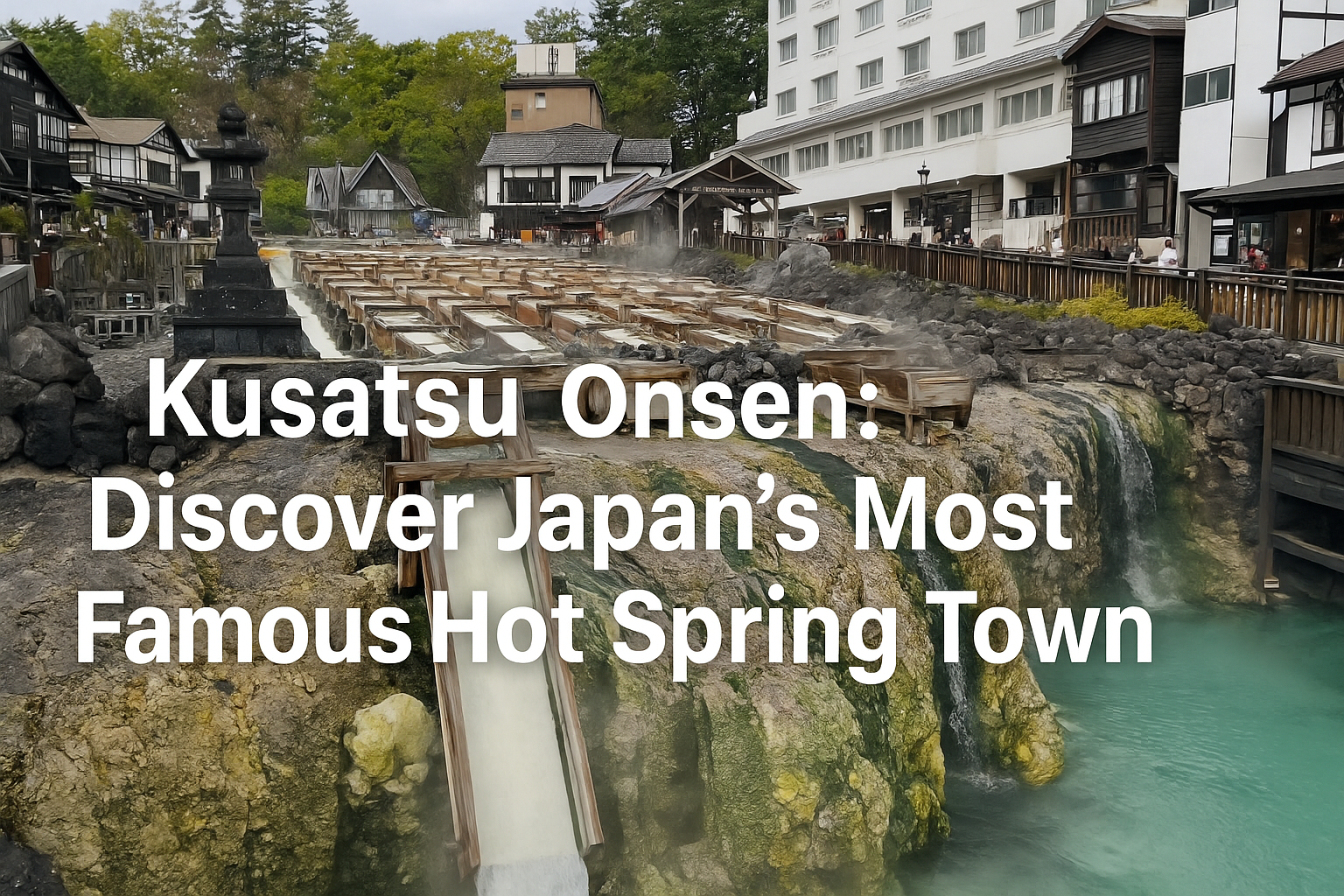👋Introduction
Nestled in the mountains of Gunma Prefecture, Kusatsu Onsen is one of Japan’s most iconic hot spring destinations. Known for its healing waters, rich tradition, and picturesque scenery, it’s no wonder Kusatsu is ranked among the top onsen towns in the country. Whether you’re a first-time visitor or a seasoned Japan traveler, Kusatsu offers an unforgettable cultural experience.
🚄 1. Getting to Kusatsu Onsen
Though tucked away in the mountains, Kusatsu is surprisingly accessible from Tokyo:
- By Train + Bus: Take the JR Limited Express from Ueno or Tokyo Station to Naganohara-Kusatsuguchi Station (~2.5 hrs), then a 25-minute bus ride to Kusatsu Onsen.
- By Car: Around 3.5–4 hours via expressway. A scenic drive, especially in autumn.
Tip: The JR TOKYO Wide Pass covers most of the route, making it ideal for tourists!
♨️ 2. Things to Do in Kusatsu Onsen
Yubatake (湯畑) – The Symbol of Kusatsu
The heart of the town, Yubatake is a large hot water field where steaming mineral water flows. It’s illuminated at night and surrounded by traditional inns and shops.
Sainokawara Park (西の河原公園)
A serene park with bubbling streams, footbaths, and walking paths that lead to an outdoor onsen. A perfect spot for a nature stroll.
Yumomi Show
Watch (or participate in) the famous Yumomi performance, where locals stir the hot spring water with wooden paddles while singing traditional songs. It’s unique to Kusatsu!
Kusatsu Tropical Wonderland
An unexpected find! A small zoo and botanical garden featuring capybaras, reptiles, and tropical birds—fun for families and animal lovers.
Try Local Snacks
Don’t miss hot onsen manju (sweet buns steamed with hot spring steam) and soft-serve ice cream in local flavors like sesame or matcha.
🛀 3. Bathing Experience in Kusatsu
Kusatsu’s hot spring water is highly acidic and known for its healing properties. Try:
- Public Baths:
- Shirahata-no-yu : Free, small bathhouse near Yubatake.
- Sainokawara Rotenburo: A massive open-air bath in the park.
- Otaki-no-yu : Known for its traditional multi-stage bathing.
- Ryokan Baths: Most inns offer private or shared onsen for overnight guests.
Note: Bathing rules apply—wash before entering, no swimsuits, and keep towels out of the water.
📸 4. My Personal Visit to Kusatsu
I visited Kusatsu in July, and the experience was magical. From the warm welcome at the ryokan to the steamy strolls around Yubatake, every moment felt like stepping into a traditional postcard. I tried the Yumomi show and relaxed at the Sainokawara open-air bath while snow fell around me. It was unforgettable.
![Insert personal photo of Yubatake or public bath with caption]
🏨 5. Where to Stay
Recommended Ryokan & Hotels:
- Hotel Sakurai : I stayed at Hotel Sakurai, one of the most well-known ryokan-style hotels in Kusatsu. The staff were incredibly welcoming, the rooms were spacious and traditionally decorated, and the large open-air baths were amazing—especially at night under the stars.
- Nakamuraya Ryokan : Traditional stay with a homely touch.
- Hotel Ichii: Overlooks : Yubatake—great view and location.
- Kusatsu Now Resort Hotel : Modern amenities with access to onsen.
Booking Tip: Reserve early during weekends and holidays. Check English-friendly sites like Booking.com or Rakuten Travel.
※During my visit to Kusatsu Onsen in July, I stayed at Hotel Sakurai — one of the most well-known ryokan-style hotels in the area. The spacious rooms, traditional tatami flooring, and large open-air bath made for an incredibly relaxing stay.
Here’s a photo I took from the hotel — the view, the atmosphere, and the hospitality were all unforgettable.
If you’re looking for a place to enjoy authentic onsen hospitality with a touch of elegance, Hotel Sakurai is a top pick.
🙌 Conclusion
Kusatsu Onsen offers an authentic taste of Japanese onsen culture. With scenic beauty, cultural performances, delicious snacks, and rejuvenating baths, it’s a perfect getaway from the city. Whether in the colorful fall or snowy winter, Kusatsu is a destination that soothes the body and soul.










コメント